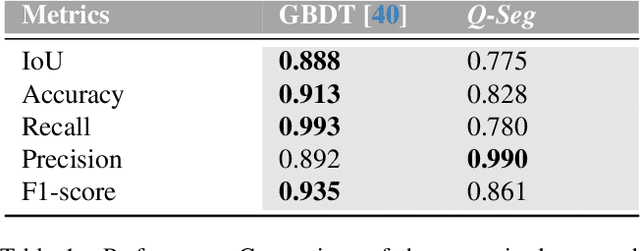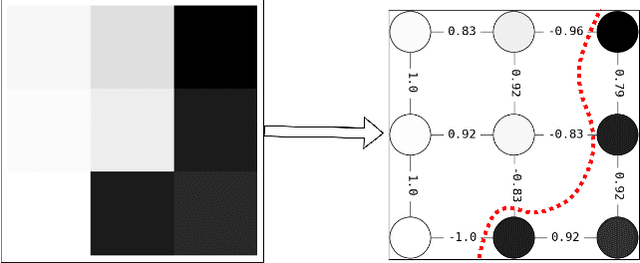Matthias Klusch
Quantum computing and artificial intelligence: status and perspectives
May 29, 2025Abstract:This white paper discusses and explores the various points of intersection between quantum computing and artificial intelligence (AI). It describes how quantum computing could support the development of innovative AI solutions. It also examines use cases of classical AI that can empower research and development in quantum technologies, with a focus on quantum computing and quantum sensing. The purpose of this white paper is to provide a long-term research agenda aimed at addressing foundational questions about how AI and quantum computing interact and benefit one another. It concludes with a set of recommendations and challenges, including how to orchestrate the proposed theoretical work, align quantum AI developments with quantum hardware roadmaps, estimate both classical and quantum resources - especially with the goal of mitigating and optimizing energy consumption - advance this emerging hybrid software engineering discipline, and enhance European industrial competitiveness while considering societal implications.
Quantum Artificial Intelligence: A Brief Survey
Aug 20, 2024



Abstract:Quantum Artificial Intelligence (QAI) is the intersection of quantum computing and AI, a technological synergy with expected significant benefits for both. In this paper, we provide a brief overview of what has been achieved in QAI so far and point to some open questions for future research. In particular, we summarize some major key findings on the feasability and the potential of using quantum computing for solving computationally hard problems in various subfields of AI, and vice versa, the leveraging of AI methods for building and operating quantum computing devices.
Qubit-efficient Variational Quantum Algorithms for Image Segmentation
May 23, 2024



Abstract:Quantum computing is expected to transform a range of computational tasks beyond the reach of classical algorithms. In this work, we examine the application of variational quantum algorithms (VQAs) for unsupervised image segmentation to partition images into separate semantic regions. Specifically, we formulate the task as a graph cut optimization problem and employ two established qubit-efficient VQAs, which we refer to as Parametric Gate Encoding (PGE) and Ancilla Basis Encoding (ABE), to find the optimal segmentation mask. In addition, we propose Adaptive Cost Encoding (ACE), a new approach that leverages the same circuit architecture as ABE but adopts a problem-dependent cost function. We benchmark PGE, ABE and ACE on synthetically generated images, focusing on quality and trainability. ACE shows consistently faster convergence in training the parameterized quantum circuits in comparison to PGE and ABE. Furthermore, we provide a theoretical analysis of the scalability of these approaches against the Quantum Approximate Optimization Algorithm (QAOA), showing a significant cutback in the quantum resources, especially in the number of qubits that logarithmically depends on the number of pixels. The results validate the strengths of ACE, while concurrently highlighting its inherent limitations and challenges. This paves way for further research in quantum-enhanced computer vision.
Q-Seg: Quantum Annealing-based Unsupervised Image Segmentation
Nov 30, 2023



Abstract:In this study, we present Q-Seg, a novel unsupervised image segmentation method based on quantum annealing, tailored for existing quantum hardware. We formulate the pixel-wise segmentation problem, which assimilates spectral and spatial information of the image, as a graph-cut optimization task. Our method efficiently leverages the interconnected qubit topology of the D-Wave Advantage device, offering superior scalability over existing quantum approaches and outperforming state-of-the-art classical methods. Our empirical evaluations on synthetic datasets reveal that Q-Seg offers better runtime performance against the classical optimizer Gurobi. Furthermore, we evaluate our method on segmentation of Earth Observation images, an area of application where the amount of labeled data is usually very limited. In this case, Q-Seg demonstrates near-optimal results in flood mapping detection with respect to classical supervised state-of-the-art machine learning methods. Also, Q-Seg provides enhanced segmentation for forest coverage compared to existing annotated masks. Thus, Q-Seg emerges as a viable alternative for real-world applications using available quantum hardware, particularly in scenarios where the lack of labeled data and computational runtime are critical.
Nav-Q: Quantum Deep Reinforcement Learning for Collision-Free Navigation of Self-Driving Cars
Nov 20, 2023



Abstract:The challenge of collision-free navigation (CFN) for self-driving cars is an NP-hard problem addressed through Deep Reinforcement Learning (DRL). Despite the effectiveness of DRL methods, their application demands significant computing resources and prolonged training periods to establish a resilient agent. On the other hand, quantum reinforcement learning algorithms have recently demonstrated faster convergence and improved stability in simple, non-real-world environments. However, their application in the real-world CFN domain has not been explored, and their direct adaptation would require a quantum computing device onboard the vehicle for testing. In this work, we propose Nav-Q, the first quantum-supported DRL algorithm for CFN of self-driving cars, that leverages quantum computation for improving the training performance without the requirement for onboard quantum hardware. Nav-Q is based on the actor-critic approach, where the critic is implemented using a hybrid quantum-classical algorithm suitable for near-term quantum devices. We assess the performance of Nav-Q using the CARLA driving simulator, a de facto standard benchmark for evaluating state-of-the-art DRL methods. Our empirical evaluations showcase that Nav-Q surpasses its classical counterpart not only in terms of training stability but also, in certain instances, with respect to the convergence rate when analyzing the Reward vs. Episode curve. This enhancement is accomplished without negatively impacting the learned policy by the agent. Furthermore, we assess Nav-Q in relation to effective dimension, unveiling that the incorporation of a quantum component results in a model possessing greater descriptive power compared to classical baselines. Finally, we evaluate the performance of Nav-Q using noisy quantum simulation, observing that the quantum noise enhances the exploratory tendencies of the agent during training.
MAQA: A Quantum Framework for Supervised Learning
Mar 20, 2023Abstract:Quantum Machine Learning has the potential to improve traditional machine learning methods and overcome some of the main limitations imposed by the classical computing paradigm. However, the practical advantages of using quantum resources to solve pattern recognition tasks are still to be demonstrated. This work proposes a universal, efficient framework that can reproduce the output of a plethora of classical supervised machine learning algorithms exploiting quantum computation's advantages. The proposed framework is named Multiple Aggregator Quantum Algorithm (MAQA) due to its capability to combine multiple and diverse functions to solve typical supervised learning problems. In its general formulation, MAQA can be potentially adopted as the quantum counterpart of all those models falling into the scheme of aggregation of multiple functions, such as ensemble algorithms and neural networks. From a computational point of view, the proposed framework allows generating an exponentially large number of different transformations of the input at the cost of increasing the depth of the corresponding quantum circuit linearly. Thus, MAQA produces a model with substantial descriptive power to broaden the horizon of possible applications of quantum machine learning with a computational advantage over classical methods. As a second meaningful addition, we discuss the adoption of the proposed framework as hybrid quantum-classical and fault-tolerant quantum algorithm.
GCS-Q: Quantum Graph Coalition Structure Generation
Dec 21, 2022Abstract:The problem of generating an optimal coalition structure for a given coalition game of rational agents is to find a partition that maximizes their social welfare and is known to be NP-hard. This paper proposes GCS-Q, a novel quantum-supported solution for Induced Subgraph Games (ISGs) in coalition structure generation. GCS-Q starts by considering the grand coalition as initial coalition structure and proceeds by iteratively splitting the coalitions into two nonempty subsets to obtain a coalition structure with a higher coalition value. In particular, given an $n$-agent ISG, the GCS-Q solves the optimal split problem $\mathcal{O} (n)$ times using a quantum annealing device, exploring $\mathcal{O}(2^n)$ partitions at each step. We show that GCS-Q outperforms the currently best classical solvers with its runtime in the order of $n^2$ and an expected worst-case approximation ratio of $93\%$ on standard benchmark datasets.
BILP-Q: Quantum Coalition Structure Generation
Apr 28, 2022


Abstract:Quantum AI is an emerging field that uses quantum computing to solve typical complex problems in AI. In this work, we propose BILP-Q, the first-ever general quantum approach for solving the Coalition Structure Generation problem (CSGP), which is notably NP-hard. In particular, we reformulate the CSGP in terms of a Quadratic Binary Combinatorial Optimization (QUBO) problem to leverage existing quantum algorithms (e.g., QAOA) to obtain the best coalition structure. Thus, we perform a comparative analysis in terms of time complexity between the proposed quantum approach and the most popular classical baselines. Furthermore, we consider standard benchmark distributions for coalition values to test the BILP-Q on small-scale experiments using the IBM Qiskit environment. Finally, since QUBO problems can be solved operating with quantum annealing, we run BILP-Q on medium-size problems using a real quantum annealer (D-Wave).
 Add to Chrome
Add to Chrome Add to Firefox
Add to Firefox Add to Edge
Add to Edge